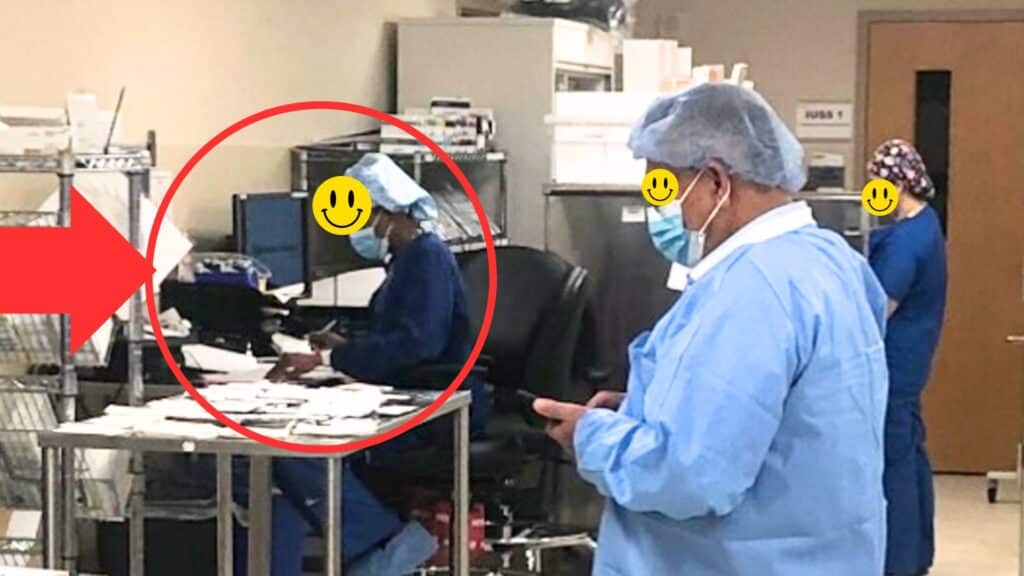What’s inside:
- Hospitals rely on paper-based documentation and fragmented workflows, leading to lost revenue and compliance risks.
- Implant charge reconciliation is a multi-step process across departments, delaying reimbursement and increasing administrative workload.
- 10–15% of implant revenue is lost due to charge capture errors and missed billing opportunities.
- Hospitals waste significant time manually tracking, validating, and processing implant charges.
The Costly Problem Hospitals Overlook
Revenue cycle management is at the heart of hospital financial health, yet one of its most overlooked challenges lies in implant charge capture. Hospitals spend 55–65% of their expenses on implants, yet outdated, manual documentation methods cause significant revenue leakage and billing inefficiencies. Paper-based tracking, sticker-based documentation, and disconnected workflows across departments lead to inaccurate patient charges, lost reimbursements, and supply chain mismanagement. Despite the growing emphasis on automation in healthcare, many hospitals still rely on inefficient systems that create unnecessary costs and operational burdens. To optimize revenue cycle management, hospitals must embrace AI-driven solutions that ensure accurate, automated charge capture for implants and high-cost medical devices.
Why Hospitals Struggle with Implant Charge Capture
Implant charge capture is one of the most complex components of revenue cycle management. Hospitals work with 10–15 major implant manufacturers, each with unique documentation and pricing structures. Without a standardized process, hospitals must manually reconcile vendor documentation, validate pricing, and match charges to contracts, creating inefficiencies that delay reimbursement and increase financial risk. Additionally, implant charges are often incorrectly coded or omitted from the charge master, leading to missed revenue opportunities and compliance issues. These inefficiencies contribute to fragmented financial operations, forcing hospitals to spend excessive time and resources correcting billing discrepancies instead of improving patient care.

The Breakdown of Manual Charge Capture
The implant billing workflow is filled with bottlenecks and opportunities for error, negatively impacting revenue cycle management. The circulating nurse in the operating room manually records implant usage, often relying on paper stickers or handwritten notes. This information is then passed to the charge nurse, who must search the charge master and manually assign the correct billing code. If discrepancies arise, the issue is escalated to purchasing, where staff must validate vendor pricing and ensure contract compliance. This manual, cumbersome process increases the risk of mischarges, lost revenue, and supply chain inefficiencies. The reliance on manual documentation, disconnected IT systems, and siloed departments prevents hospitals from achieving full revenue visibility and financial accuracy.
AI-Powered Revenue Cycle Management with Snap&Go
IDENTI Medical’s Snap&Go is a game-changing AI-powered charge capture solution that eliminates manual implant documentation errors and enhances revenue cycle management. Using computer vision technology, Snap&Go instantly captures, verifies, and records implant usage at the point of care. Instead of relying on handwritten logs or stickers, nurses simply snap a photo of the implant package, and Snap&Go automatically updates the patient charge, ensuring seamless revenue capture. The system integrates directly with hospital billing, ERP, and materials management systems, mapping each implant to the correct charge code and validating contract pricing in real time.

Financial Impact of Automating Implant Charge Capture
Automating implant charge capture with Snap&Go delivers measurable financial benefits, improving revenue cycle management in several key areas:
- Recovering 10–15% of lost revenue by ensuring all implant charges are accurately documented and billed.
- Reducing administrative workload, allowing charge nurses and finance teams to focus on higher-value tasks.
- Preventing billing errors and compliance risks, reducing claims denials and payment delays.
- Increasing financial transparency, enabling hospitals to track, manage, and optimize implant expenses in real time.
By automating implant charge capture, hospitals gain a clear, auditable record of every implant used, ensuring that all items are properly coded, billed, and reimbursed without the risk of revenue leakage.
Why Hospitals Must Act Now
In today’s evolving healthcare landscape, revenue cycle management challenges continue to grow as hospitals face rising costs and reimbursement pressures. Leading institutions have already adopted AI-driven automation to optimize charge capture and prevent revenue loss. Hospitals that continue to rely on outdated, manual processes risk falling behind in financial performance and operational efficiency.
The future of revenue cycle management is AI-driven, and hospitals that invest in automated charge capture solutions like Snap&Go will gain a significant competitive advantage. By eliminating billing discrepancies, manual errors, and revenue leakage, healthcare organizations can maximize financial sustainability while improving efficiency across clinical and administrative teams.
A recent report from the American Hospital Association highlights how AI can enhance revenue forecasting, patient payment optimization, and data security in revenue cycle management. With leading hospitals already leveraging AI to streamline financial processes, healthcare organizations that fail to modernize risk falling behind (AHA Report).
Future-Proofing Revenue Cycle Management with AI
Hospitals must take a proactive approach to revenue cycle management by adopting AI-powered solutions that eliminate inefficiencies and capture 100% of implant revenue in real time. Snap&Go provides the automation, accuracy, and transparency needed to ensure that every charge is accounted for, every implant is billed correctly, and every hospital maximizes its financial potential.
With billions of dollars lost annually due to implant charge errors, hospitals can no longer afford to rely on manual systems. The path to financial sustainability starts with AI-driven automation. Schedule a demo today to see how Snap&Go can transform your hospital’s revenue cycle management and implant charge capture process.






